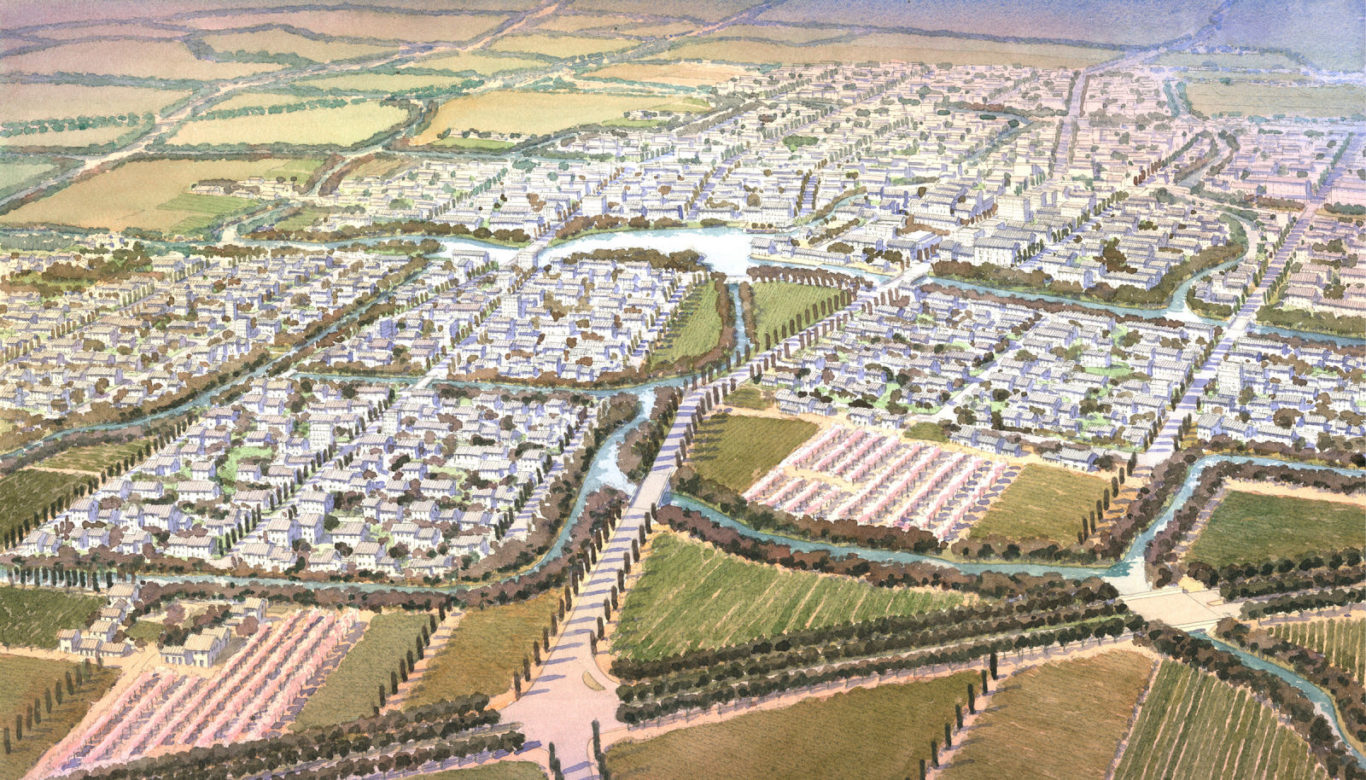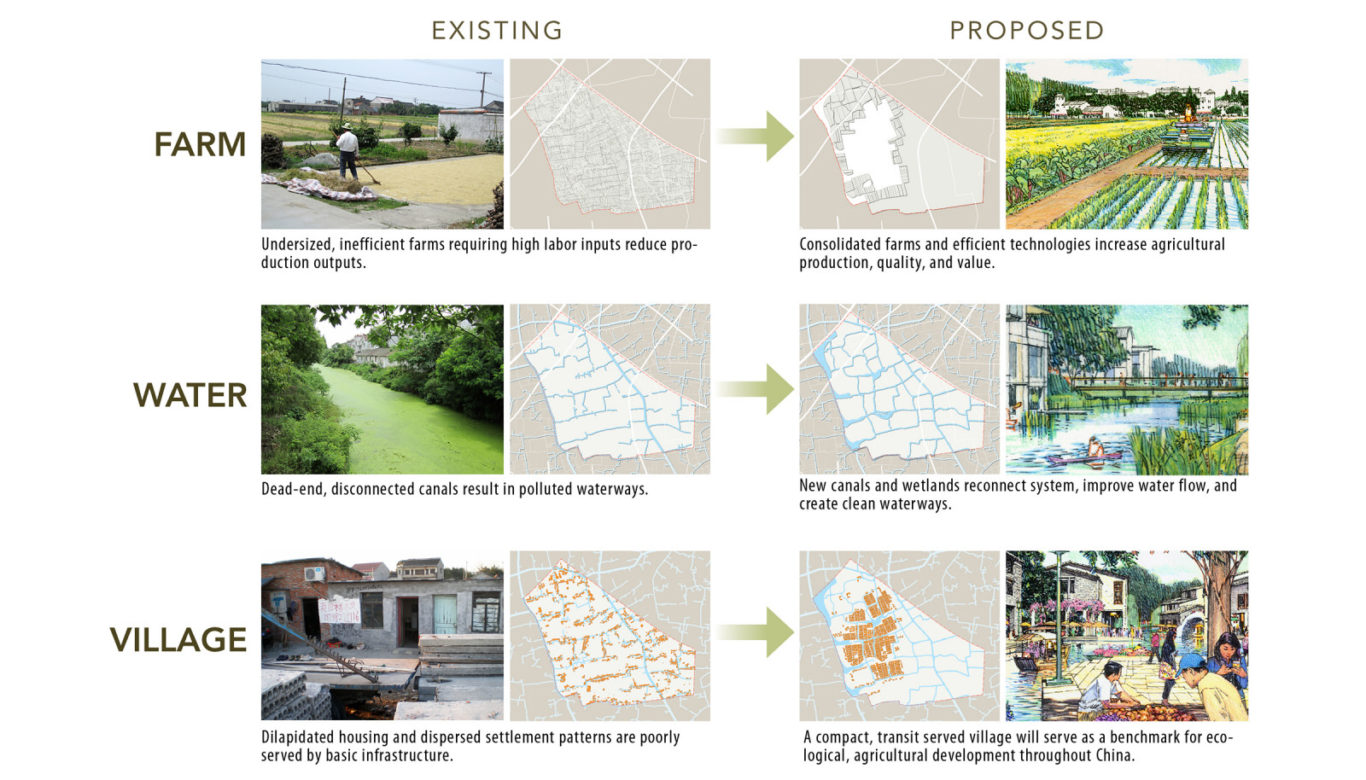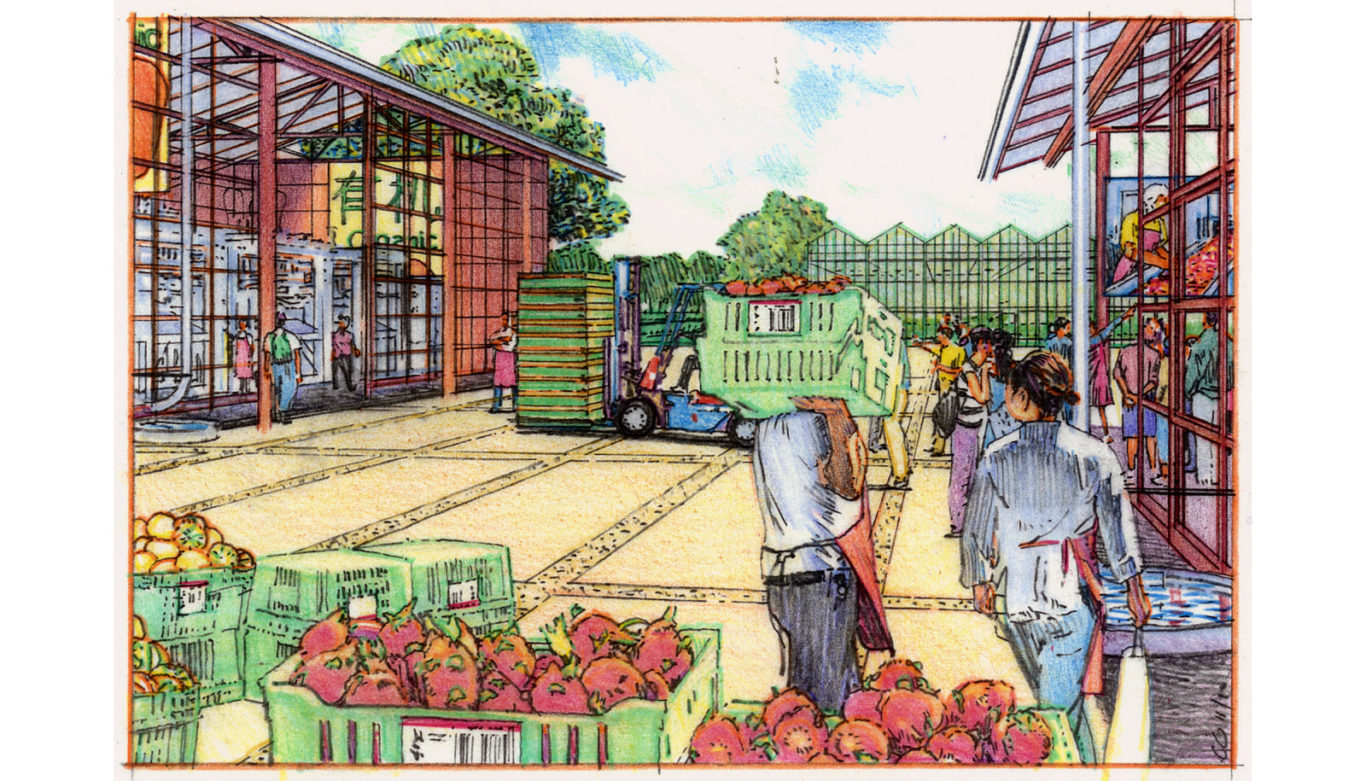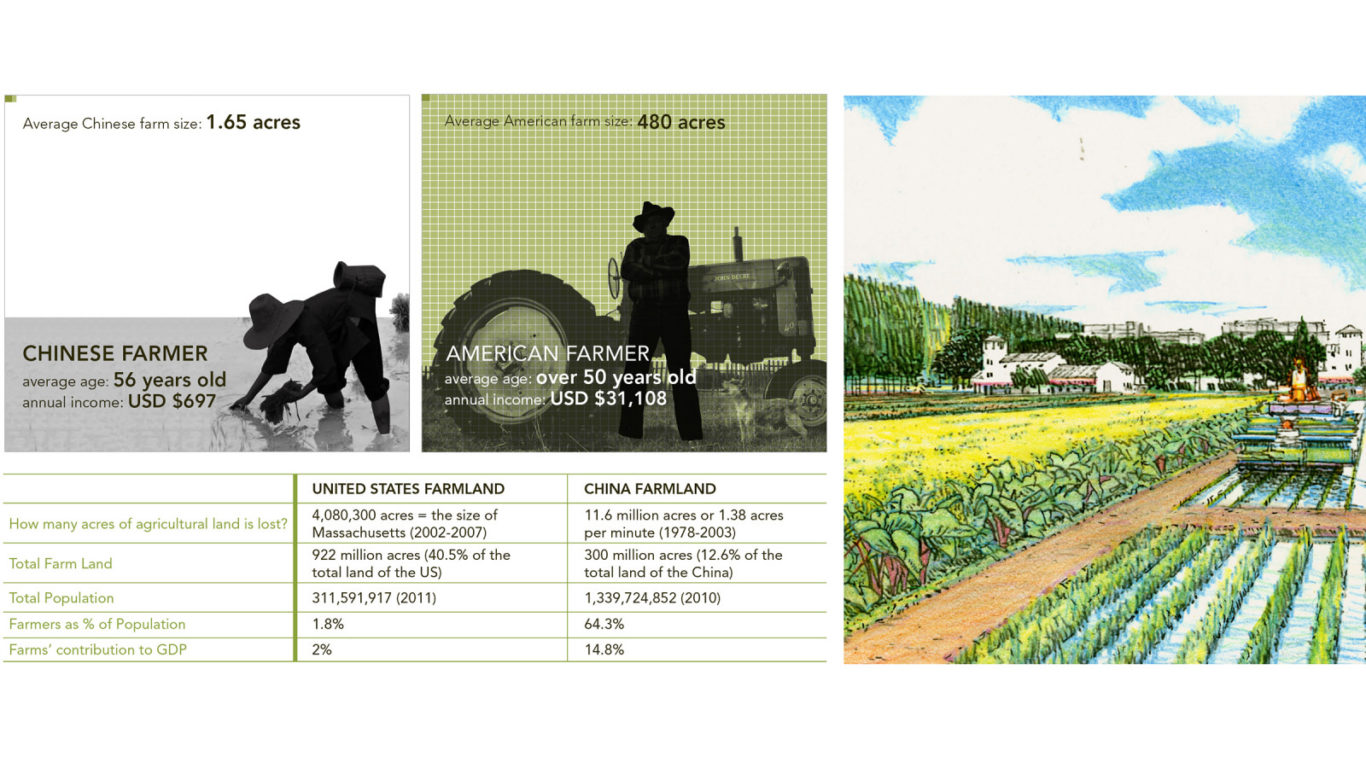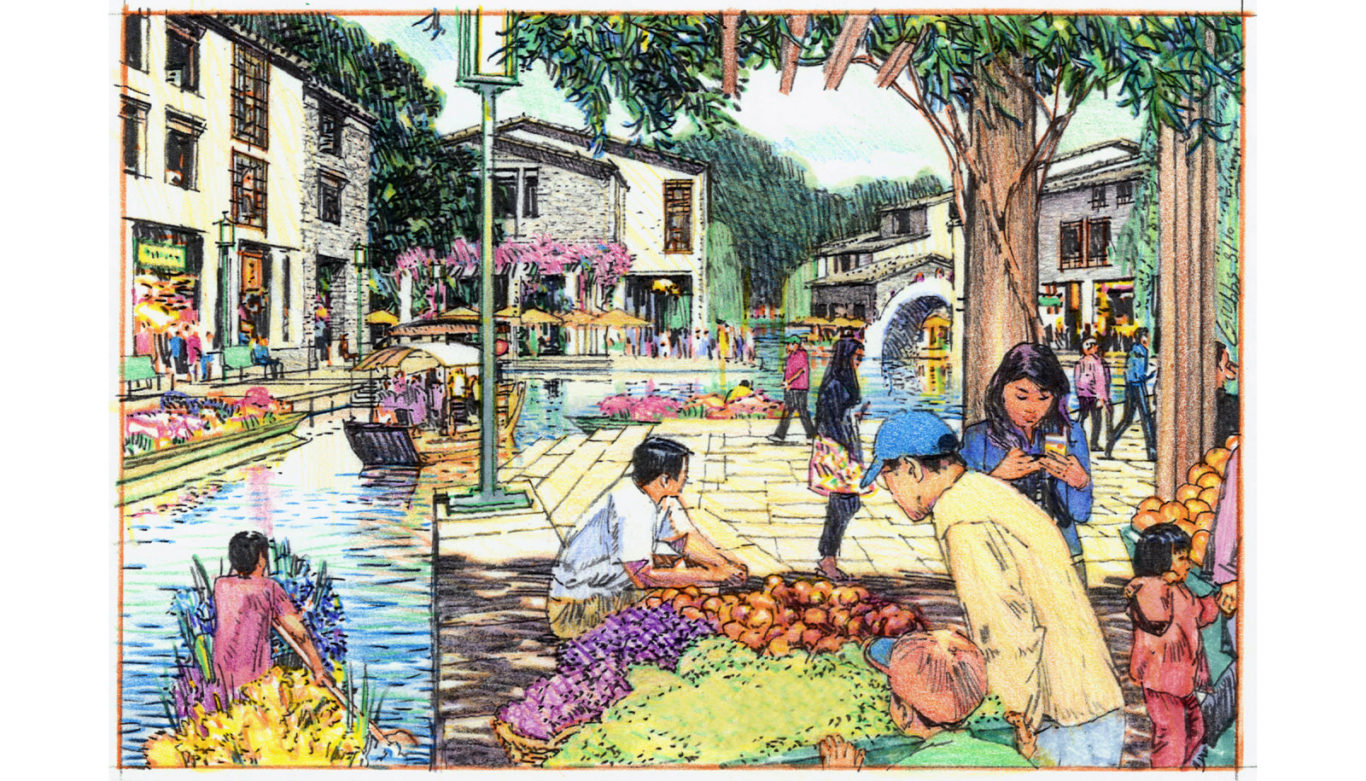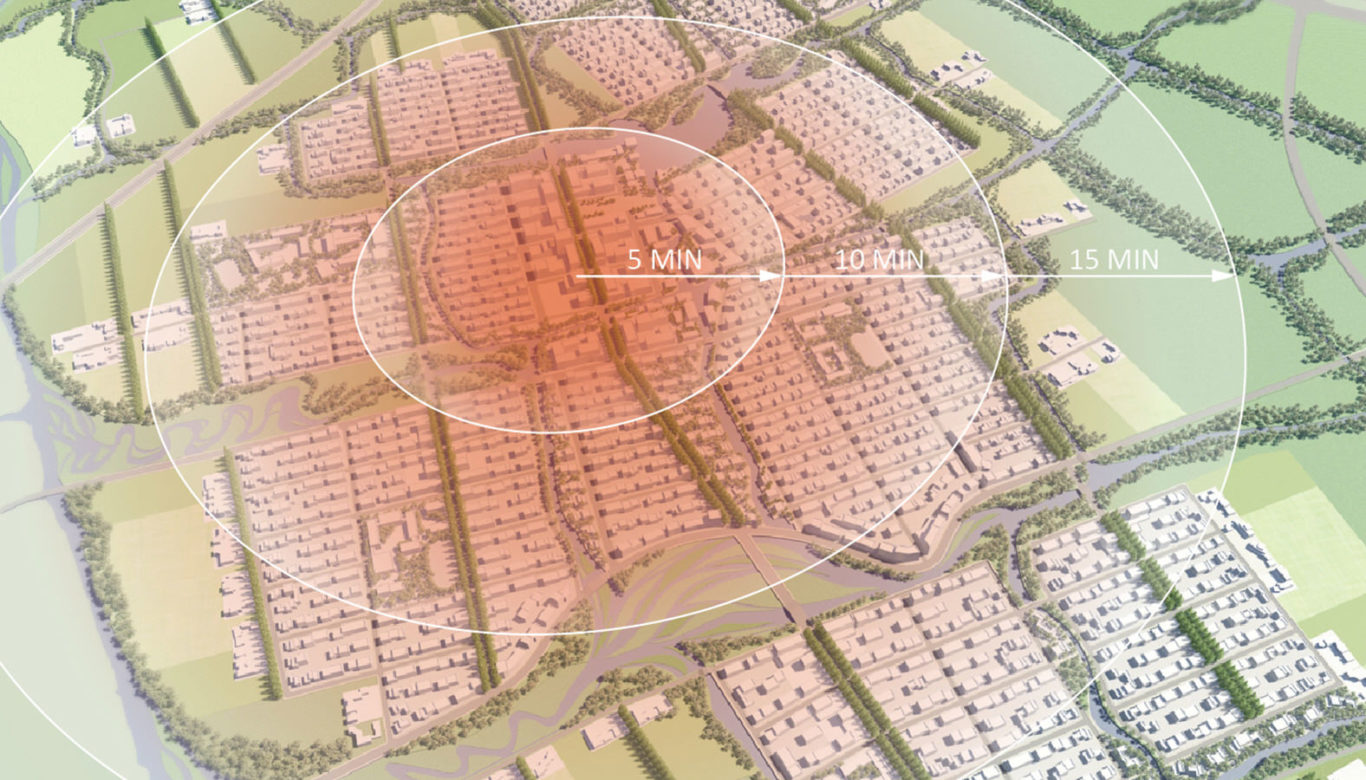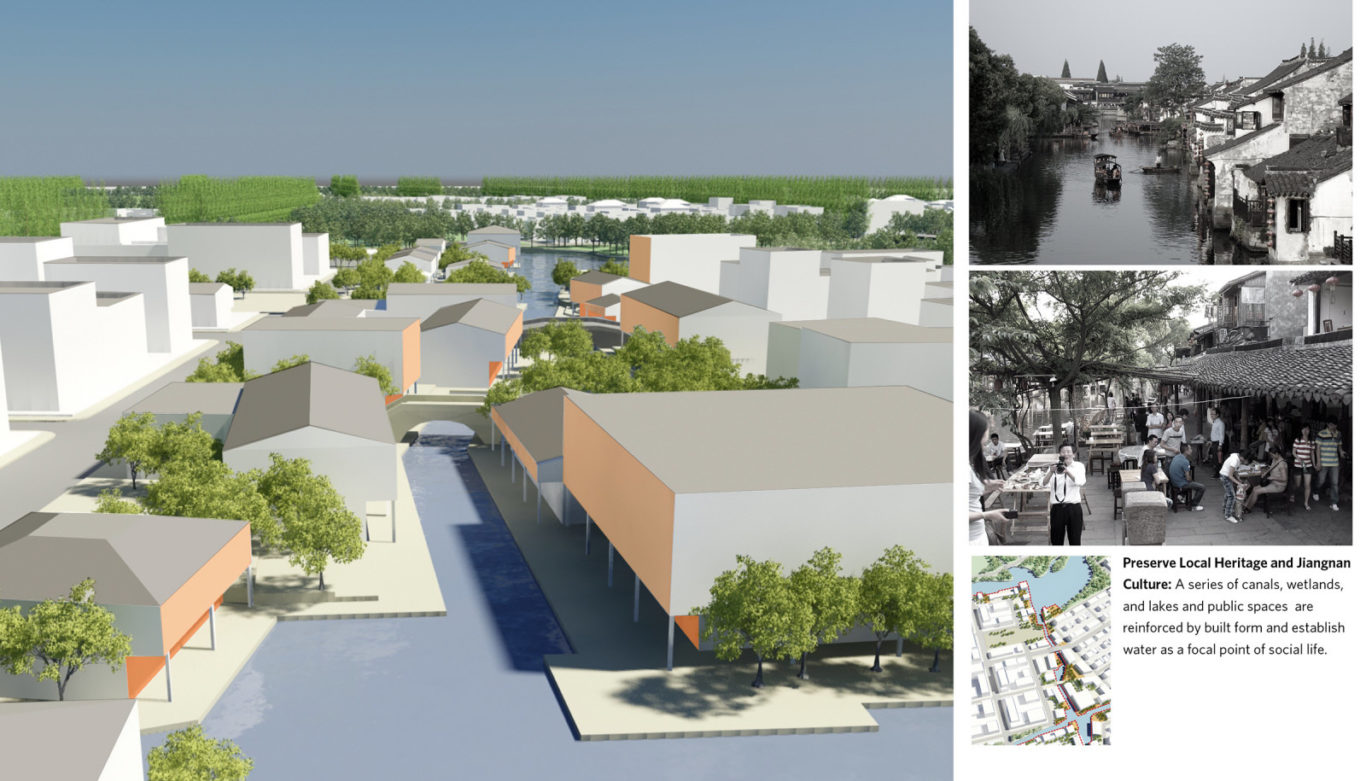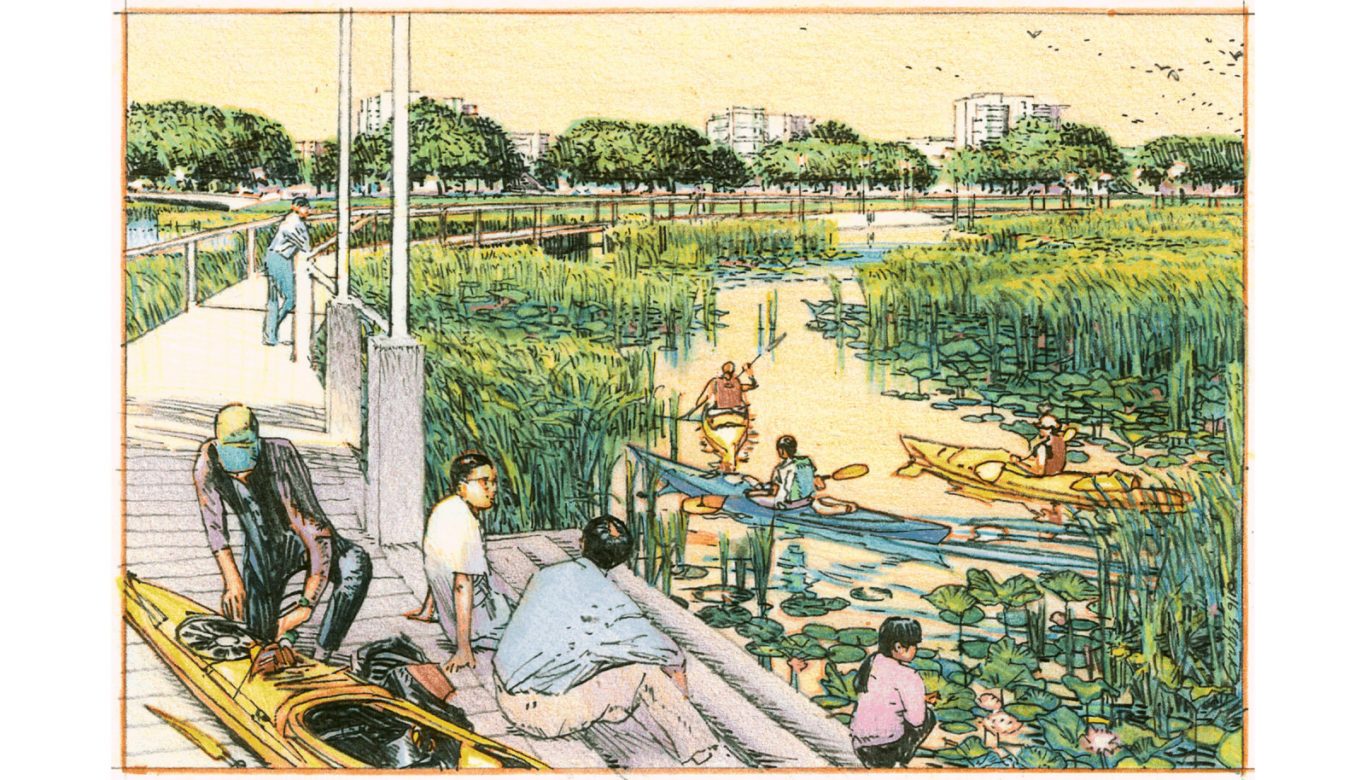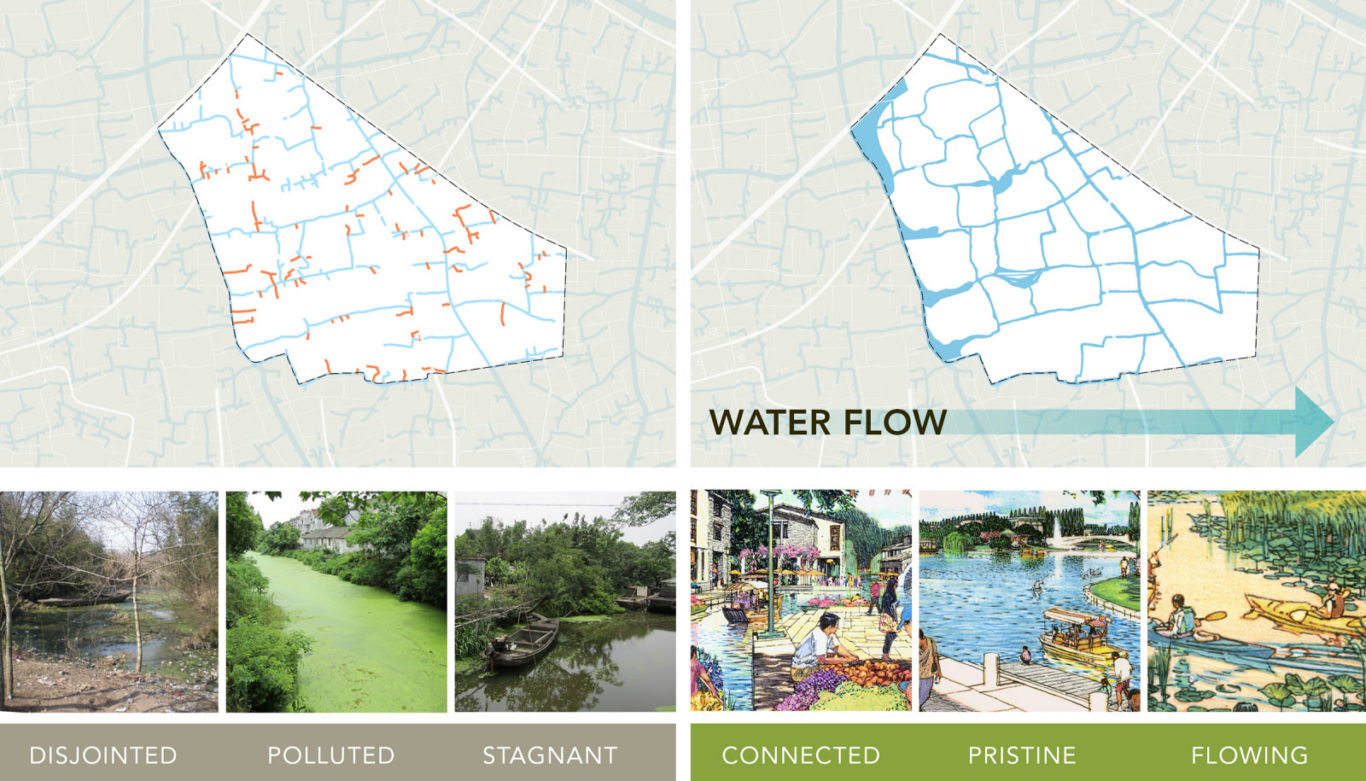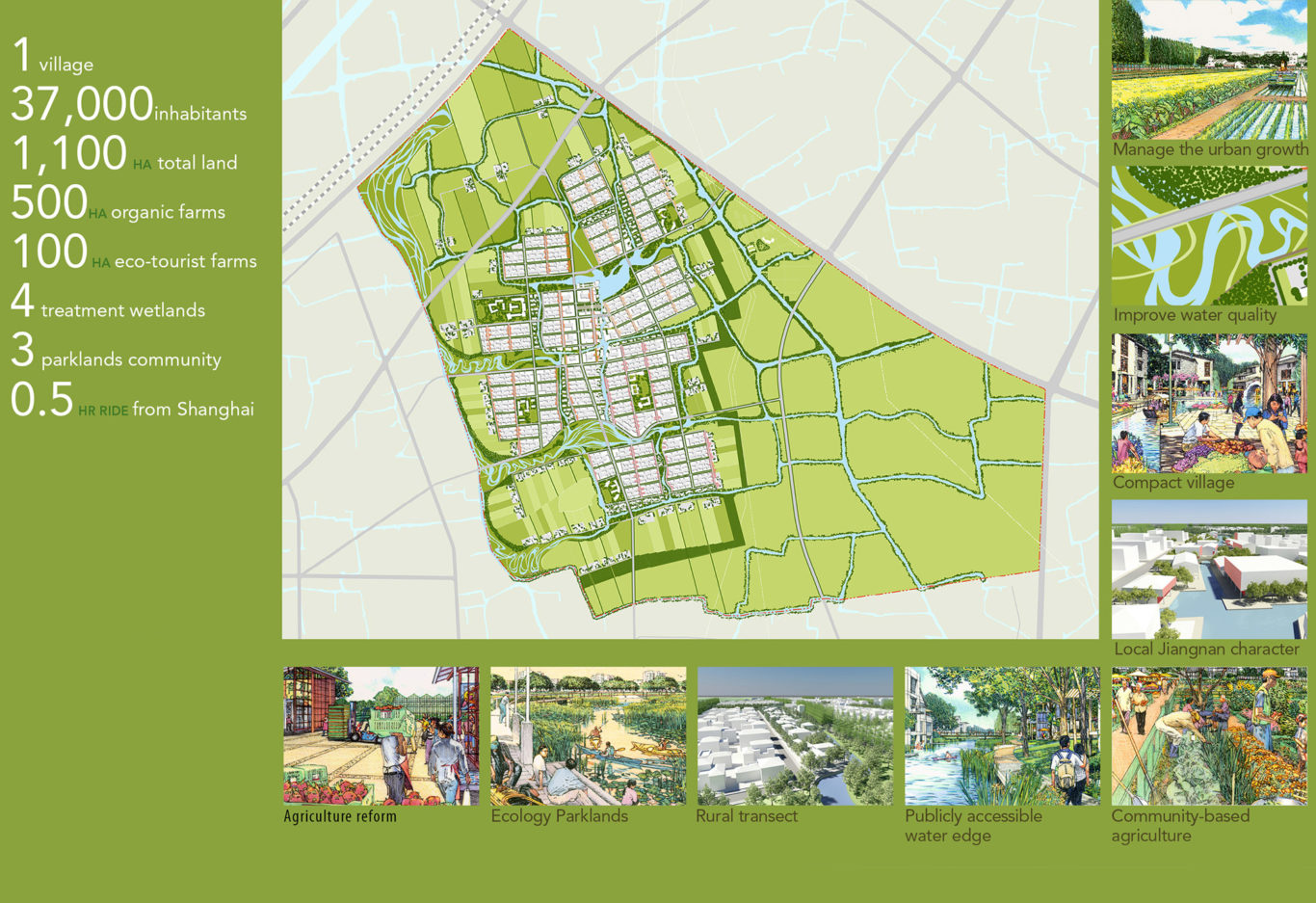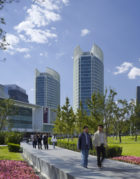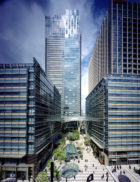The compact urban village accomodates development pressure by creating an urban growth boudary that protects and enhances existing agricultural production capacity. Image © SOM
A sustainability strategy creates a diverse, mixed-use village within a modern agrarian landscape and provides access to jobs, open space, and city amenities while maintaining the region's agricultural hertiage. Image © SOM
Of the entire 1,100 hectare site, over 700 hectares are maintained as working farms that will produce products such as organic herbs, vegetables, fruits, rice, and flowers. Image © SOM
The development increases existing agricultural production value through the consolidation of farms into more efficient operations to increase yields as well as to educate farmers in new technologies. Image © SOM
A series of canals, wetlands, lakes, and public spaces are reinforced by built form and establish water as a focal point of social life, preserving local heritgae and Jiangnan culture. Image © SOM
The Master Plan improves transportation and walkability by locating nearly all development within a short, 15-minute walk of the village commerical center. Image © SOM
The Master Plan establishes distinct neighborhoods that contain housing, retail, schools, parks and civic facilities essential to the daily life of residents. Image © SOM
The Master Plan improves canal quality water management and establishes public parks on all canal edges. Image © SOM
Dead end canals are removed and new links are added to reconnect the system and improve flow while 45ha of constructed wetlands improve canal water from class V to class III water quality. Image © SOM
Integrated strategies help to ensure a secure food supply, promote healthy living, create jobs for future generations, improve water quality, and manage urban growth. Image © SOM
